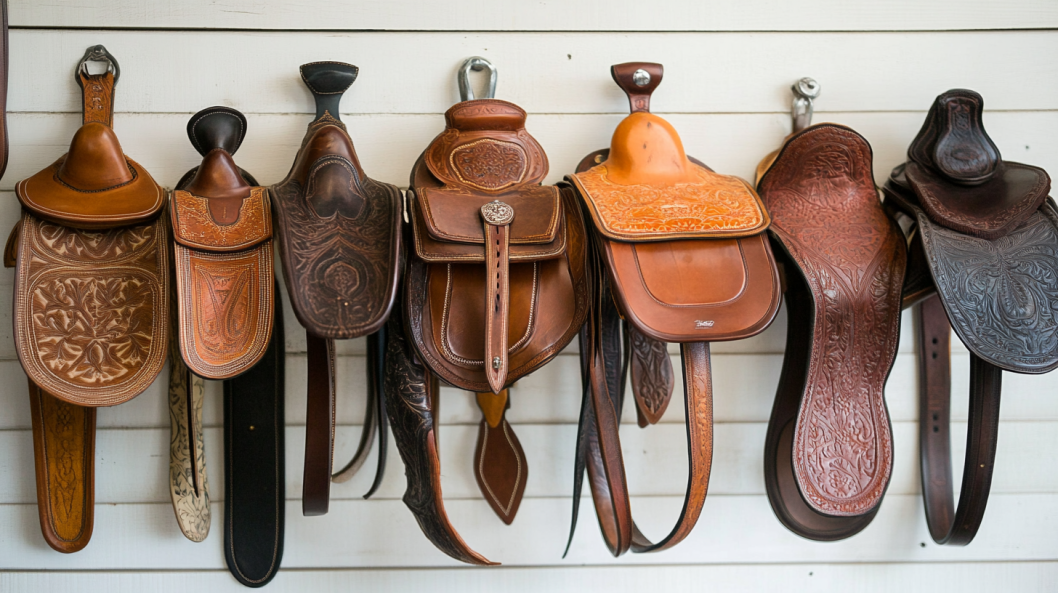Choosing the perfect horse saddle is crucial for both the rider and the horse. The right saddle enhances comfort, improves performance, and can prevent injuries. With so many options available, selecting the ideal saddle can be overwhelming.
In my opinion, the saddle transcends its role as mere equipment, embodying a vital element in the intricate partnership between rider and horse. It should seamlessly blend into this relationship, serving as an extension of the rider’s body to enhance both comfort and performance. A well-fitted saddle provides essential support, allowing for fluid communication and balance, fostering a harmonious connection. Here’s a comprehensive guide to help you choose the ideal saddle.
1. Understand the Different Types of Saddles
Before diving into the specifics, it’s important to familiarize yourself with the different types of saddles available:
- English Saddles: These are commonly used for dressage, jumping, and eventing disciplines. They are generally lightweight with a close contact design that allows the rider to feel more connected to the horse.
- Western Saddles: Known for their durability and comfort, they are ideal for trail riding and cattle work. They have a more padded seat and larger flaps compared to English saddles.
- Endurance Saddles: Designed for long-distance riding, these saddles prioritize comfort and weight distribution over long periods.
- All-Purpose Saddles: These are versatile and can be used for various disciplines, making them a good choice for riders who engage in multiple activities.
2. Consider the Fit for Your Horse
A properly fitting saddle is essential to avoid causing discomfort or injury to your horse. Here are some factors to consider:
- Saddle Tree Size: The tree is the internal frame of the saddle, and its size should match your horse’s width and shoulder structure. A tree that’s too narrow or too wide can cause pressure points and discomfort.
- Gullet Width: This is the channel running along the underside of the saddle. It should be wide enough to accommodate your horse’s spine without pressing against it.
- Panel Configuration: The panels are the parts of the saddle that sit on the horse’s back. They should distribute weight evenly and align with your horse’s muscles.
3. Fit for the Rider
A saddle that fits the rider well will enhance your balance and control. Consider the following:
- Seat Size: The seat size should be appropriate for your body size. A seat that’s too small can be uncomfortable, while one that’s too large may not provide adequate support.
- Stirrup Length: Ensure the saddle allows for adjustable stirrups to accommodate your preferred riding position and leg length.
- Flap Length and Shape: The flap should suit your leg length and riding style. Longer flaps are generally preferred for jumping, while shorter flaps are ideal for dressage.
4. Material and Construction
The materials used in a saddle can affect its durability, comfort, and maintenance:
- Leather: Traditional and durable leather saddles offer a classic look and conform to the horse’s shape over time. However, they require regular care to keep them in good condition.
- Synthetic Materials: These are often lighter, easier to clean, and more affordable than leather. They may not conform as well to your horse’s shape but can be a good choice for some riders.
5. Try Before You Buy
Whenever possible, try the saddle on your horse before making a purchase. Many tack shops offer trial periods or demo saddles. Ensure the saddle is comfortable for both you and your horse. Pay attention to:
- Movement: Observe how the saddle moves with your horse. It should not shift or cause friction.
- Comfort: Ride in the saddle to check for pressure points or discomfort.
6. Consult a Professional
If you’re unsure about fitting or choosing a saddle, seek advice from a saddle fitter or an experienced equestrian. They can provide valuable insights and help ensure that the saddle you choose meets your and your horse’s needs.
7. Budget Considerations
Saddles come in a range of prices. While investing in a quality saddle is important, options are available for different budgets. Consider purchasing a used saddle in good condition if a new one is out of your price range. Just make sure to have it checked by a professional to ensure it’s a good fit.
In my opinion, choosing the right saddle is crucial as it requires thoughtful attention to both the horse’s and the rider’s needs to ensure optimal comfort and performance. A well-fitting saddle can significantly enhance the rider’s balance and stability, reducing discomfort and fatigue during rides. A properly selected saddle aligns with the horse’s body shape and movement, preventing potential pain or restriction that could affect their performance and overall health. A well-chosen saddle can make a difference in your comfort and your horse’s performance.





